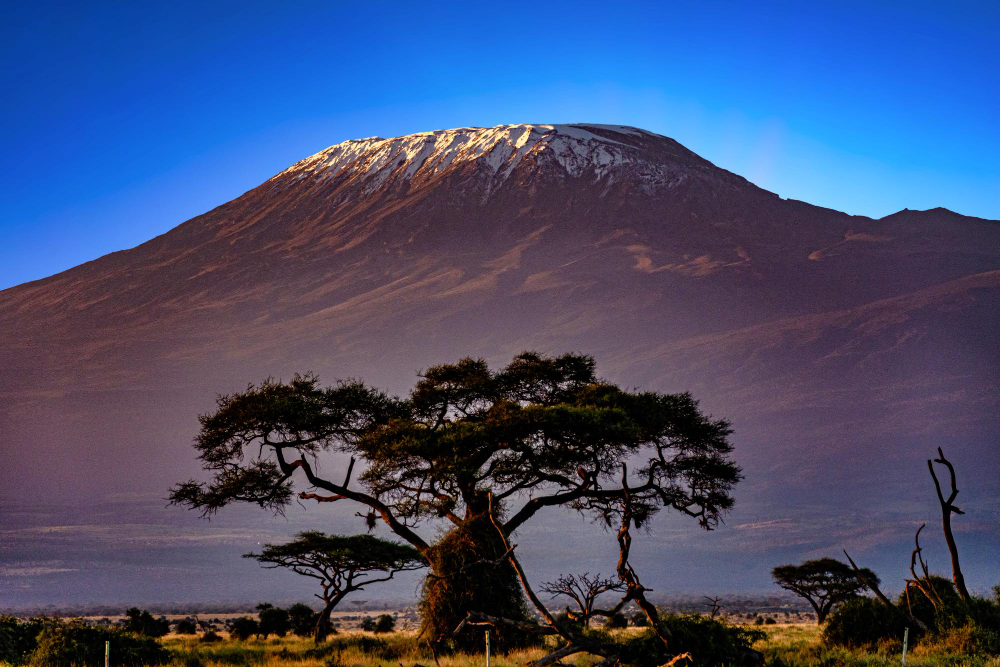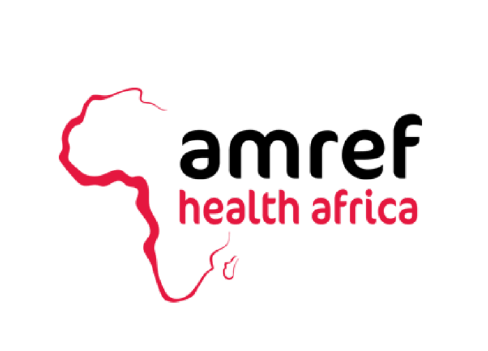Mount Kilimanjaro, fondly known as the “Roof of Africa,” is a bucket-list destination for adventurers, trekkers, and nature enthusiasts worldwide. As the highest peak in Africa and the tallest free-standing mountain on Earth, it stands as a testament to nature’s grandeur and human endurance. But just how tall is Mount Kilimanjaro, and what makes it such an iconic climb? In this comprehensive guide, we’ll answer that question and dive deep into every aspect of Kilimanjaro—its height, global ranking, climbing routes, preparation, ecological wonders, cultural significance, and more. Whether you’re planning to summit Uhuru Peak or simply curious about this majestic volcano, Africa Paradise Adventures is your trusted partner for an unforgettable Tanzanian adventure. Let’s embark on the journey to explore Kilimanjaro in all its glory!

The Height of Mount Kilimanjaro
Mount Kilimanjaro’s height is officially recorded as 5,895 meters (19,341 feet) above sea level, a measurement established by British cartographers in 1952 and widely accepted today. This figure is prominently displayed on the wooden sign at Uhuru Peak, Kilimanjaro’s summit, proclaiming it “Africa’s Highest Point” and the “World’s Highest Free-Standing Mountain.” However, a 2008 survey using advanced GPS and gravimeter technology suggested a slightly lower height of 5,890 meters (19,324 feet). The discrepancy arises from the challenges of measuring a massive volcanic peak, with factors like glacial cover and erosion affecting precision. Despite this, the 5,895-meter figure remains the standard in climbing communities and official records.
Kilimanjaro’s topographic prominence is equally impressive, rising approximately 4,900 meters (16,100 feet) from its surrounding plateau base at 900–1,000 meters above sea level. This makes it the tallest free-standing mountain globally, unconnected to any mountain range. For comparison, Mount Everest stands at 8,848 meters but is part of the Himalayan range, while Kilimanjaro’s isolated rise creates a dramatic silhouette visible for miles across the Tanzanian savanna.
Kilimanjaro’s Global Ranking and Prominence

Mount Kilimanjaro holds a prestigious place among the world’s peaks. It ranks as the fourth most topographically prominent mountain globally, behind Mount Everest (8,848 m), Aconcagua (6,960 m), and Denali (6,190 m). Its prominence of 4,900 meters above its base is a key factor in its fame, as it towers over the surrounding plains without neighboring peaks. Kilimanjaro is also the highest volcano in the Eastern Hemisphere and one of the Seven Summits—the highest peaks on each continent.
As a dormant stratovolcano, Kilimanjaro comprises three volcanic cones: Kibo (the highest, home to Uhuru Peak), Mawenzi (5,149 m), and Shira (4,005 m). Kibo’s crater, with its ash pit, is a geological marvel, while Mawenzi’s rugged spires and Shira’s eroded plateau add to the mountain’s diversity. Kilimanjaro’s free-standing nature and volcanic origins set it apart from other peaks, making it a unique challenge and a UNESCO World Heritage Site since 1987 for its natural and cultural significance.
Geological and Historical Context
Kilimanjaro’s formation began approximately 1 million years ago through volcanic activity along the East African Rift. The mountain’s three cones were formed by successive eruptions, with Kibo being the youngest and most active until its last minor activity 150,000–200,000 years ago. Today, Kibo remains dormant but emits volcanic gases, hinting at its geological vitality. The name “Kilimanjaro” is debated, possibly derived from Swahili (kilima meaning “hill” and njaro meaning “whiteness” or “shining”) or Chagga terms for “mountain of greatness” or “unclimbable.”
Historically, Kilimanjaro has been central to the Chagga people, who have lived on its slopes for centuries. They revered the mountain as a spiritual entity, using its fertile lands for agriculture. European explorers first documented Kilimanjaro in 1848, with German missionary Johannes Rebmann’s accounts sparking fascination. The first confirmed summit was achieved in 1889 by Hans Meyer and Ludwig Purtscheller, marking the beginning of Kilimanjaro’s global allure.
Climbing Mount Kilimanjaro: Altitude Gain and Routes
Climbing Kilimanjaro is a non-technical trek, making it accessible to adventurers with moderate fitness levels. Climbers ascend approximately 4,000–4,900 meters from trailheads (starting at 1,800–2,400 meters) to Uhuru Peak, depending on the route. The primary challenge is altitude, with risks of acute mountain sickness (AMS), high-altitude pulmonary edema (HAPE), and high-altitude cerebral edema (HACE). Proper acclimatization, guided by experts like those at Africa Paradise Adventures, is critical for a safe ascent.
Kilimanjaro Routes
There are seven established routes, each with unique characteristics:
- Machame Route (6–7 days): Known as the “Whiskey Route,” it’s scenic and moderately challenging, with a high summit success rate (85–90%) due to good acclimatization. Climbers pass through the Shira Plateau and Barranco Wall.
- Marangu Route (5–6 days): The “Coca-Cola Route” offers dormitory-style huts, making it the most comfortable but less scenic. Success rate: ~70%.
- Lemosho Route (7–8 days): A longer, picturesque route with excellent acclimatization and a 90% success rate. It starts in the western rainforest and joins Machame at the Shira Plateau.
- Rongai Route (6–7 days): Approaches from the north, near the Kenyan border, and is less crowded. Ideal for rainy seasons, with an 80% success rate.
- Umbwe Route (6 days): The steepest and shortest route, suitable for experienced trekkers. Success rate: ~60–70%.
- Northern Circuit (8–9 days): The longest route, offering the best acclimatization (95% success rate) and 360-degree views.
- Shira Route (6–7 days): Starts at a higher altitude (3,600 m), merging with Lemosho. Less common due to its high starting point.
Africa Paradise Adventures offers guided treks on all routes, with expert porters, cooks, and safety equipment like oxygen tanks and hyperbaric chambers. Our 98% summit success rate reflects our commitment to acclimatization and climber support.
Altitude Gain by Route
- Machame: Starts at 1,800 m, gains ~4,095 m to Uhuru Peak.
- Marangu: Starts at 1,970 m, gains ~3,925 m.
- Lemosho: Starts at 2,100 m, gains ~3,795 m.
- Rongai: Starts at 2,000 m, gains ~3,895 m.
- Umbwe: Starts at 1,600 m, gains ~4,295 m.
- Northern Circuit: Starts at 2,100 m, gains ~3,795 m.
- Shira: Starts at 3,600 m, gains ~2,295 m.
Preparing for the Climb: Training, Gear, and Health
Training
Climbing Kilimanjaro requires 3–6 months of preparation. A regimen should include:
- Cardiovascular Fitness: Running, cycling, or swimming (3–4 times/week).
- Strength Training: Leg exercises (squats, lunges) and core workouts.
- Hiking Practice: Long hikes (4–6 hours) with a weighted backpack (10–15 kg) on varied terrain.
- Altitude Simulation: If possible, train at high altitudes or use altitude tents.
Gear Checklist
Africa Paradise Adventures provides group equipment (tents, cooking supplies, oxygen tanks), but climbers need personal gear:
- Clothing: Moisture-wicking base layers, fleece mid-layers, waterproof jacket and pants, insulated down jacket, hat, gloves, and gaiters.
- Footwear: Waterproof hiking boots (broken-in), camp shoes, and thick socks.
- Accessories: Trekking poles, headlamp (with extra batteries), sunglasses, sunscreen (SPF 50+), and a 3–4-season sleeping bag.
- Other: Daypack (20–30L), water bottles or hydration system (3L), personal first-aid kit, and high-calorie snacks.
Request our free Kilimanjaro Packing List for a detailed guide.
Health Considerations
- Vaccinations: Yellow fever (required for Tanzania), typhoid, hepatitis A/B, and malaria prophylaxis.
- Altitude Sickness: Symptoms include headaches, nausea, and fatigue. Preventive measures include slow ascent, hydration (4–5L/day), and medications like Diamox (consult a doctor).
- Fitness Level: Moderate fitness is sufficient, but consult a doctor for pre-existing conditions.
Unique Features of Mount Kilimanjaro
Kilimanjaro’s ecological diversity spans five distinct zones:
- Cultivated Zone (800–1,800 m): Farmlands with coffee and banana plantations.
- Rainforest Zone (1,800–2,800 m): Lush forests with colobus monkeys, blue monkeys, and vibrant birdlife.
- Heath/Moorland Zone (2,800–4,000 m): Shrublands with giant groundsels and lobelias.
- Alpine Desert Zone (4,000–5,000 m): Barren, rocky terrain with extreme temperature swings.
- Arctic Summit Zone (5,000–5,895 m): Icy, glacier-covered landscapes with minimal vegetation.
Flora and Fauna
The rainforest hosts colobus monkeys, leopards (rarely seen), and birds like the Hartlaub’s turaco. Higher zones feature unique plants like the giant groundsel and everlasting flowers. The summit’s glaciers, though receding (80% loss since 1912), remain a highlight, with ongoing conservation efforts to monitor climate change impacts.
Geological Highlights
Kilimanjaro’s volcanic cones offer stunning features:
- Kibo: The summit crater (1.5 km wide) contains an ash pit and fumaroles.
- Mawenzi: Jagged peaks for technical climbers.
- Shira: A collapsed caldera forming a vast plateau.
Cultural and Historical Significance
The Chagga people, numbering over 1 million, have lived on Kilimanjaro’s slopes for centuries, cultivating crops and venerating the mountain as a spiritual entity. Their oral traditions describe Kilimanjaro as a gift from the gods. Today, Chagga guides and porters play a vital role in the climbing industry, sharing their knowledge with trekkers.
Kilimanjaro’s global fame grew after its first recorded ascent in 1889. Its inclusion in the Seven Summits and UNESCO status has cemented its status as a global icon, drawing ~50,000 climbers annually.

Why Climb with Africa Paradise Adventures?
Africa Paradise Adventures offers unmatched expertise for your Kilimanjaro journey:
- Expert Guides: Our local Chagga guides lead 150+ climbs yearly, with a 98% summit success rate.
- Safety First: Equipped with oxygen tanks, hyperbaric chambers, and daily health checks.
- Tailored Packages: Choose from 6–12-day itineraries, including safaris in Serengeti, Ngorongoro Crater, and Tarangire National Park.
- Eco-Friendly: We support local communities and minimize environmental impact through sustainable practices.
- Cultural Immersion: Learn about Chagga culture and Tanzanian wildlife from our knowledgeable team.
Our 12-day Kilimanjaro + Safari Package combines a 7-day Machame or Lemosho trek with a 2-day safari, perfect for beginners and seasoned adventurers alike.
Practical Information for Climbers
- Best Time to Climb: Dry seasons (January–March, June–October) offer clear skies and safer trails. Avoid April–May (long rains) and November (short rains).
- Cost: Varies by route and operator ($2,000–$4,000). Contact Africa Paradise Adventures for a detailed quote.
- Permits: Required for Kilimanjaro National Park, included in our packages.
- Success Rate: Overall ~65%, but higher (90–95%) with longer routes and experienced operators like ours.
- Weather: Expect temperatures from 25°C (77°F) at the base to -20°C (-4°F) at the summit.
- Travel Logistics: Fly into Kilimanjaro International Airport (JRO). We provide transfers to Moshi or Arusha.
FAQs
How tall is Mount Kilimanjaro?
Mount Kilimanjaro is 5,895 meters (19,341 feet) above sea level, though a 2008 survey suggests 5,890 meters (19,324 feet). The 5,895-meter figure is standard.
Is Kilimanjaro the highest mountain in Africa?
Yes, it’s the highest peak and free-standing mountain in Africa.
How long does it take to climb Kilimanjaro?
Routes take 5–9 days, with 7–8 days recommended for better acclimatization.
Do I need technical climbing skills?
No, moderate fitness and preparation are sufficient. No ropes or ice axes are needed.
What is the best time to climb Kilimanjaro?
January–March and June–October for dry weather and clear views.
How does Kilimanjaro rank globally?
It’s the fourth most prominent peak and part of the Seven Summits.
What is the hardest part of climbing Kilimanjaro?
The altitude, particularly the summit night (4,800–5,895 m), with cold temperatures and low oxygen.
Can beginners climb Kilimanjaro?
Yes, with proper training and a longer route like Lemosho or Northern Circuit.
What wildlife will I see?
Colobus monkeys, blue monkeys, and birds in the rainforest; minimal wildlife above 3,000 m.
Are the glaciers disappearing?
Yes, they’ve lost 80% of their volume since 1912 due to climate change, but some remain visible.
Mount Kilimanjaro, at 5,895 meters (19,341 feet), is more than Africa’s highest peak—it’s a journey through diverse ecosystems, rich cultural heritage, and personal triumph. From its volcanic origins to its receding glaciers, Kilimanjaro captivates climbers and dreamers alike. With Africa Paradise Adventures, you’ll experience a safe, guided ascent with a 98% summit success rate, complemented by optional safaris to Tanzania’s iconic parks.
Ready to stand on the Roof of Africa? Visit https://africaparadiseadventures.com/ to book your adventure or request our free Kilimanjaro Packing List today!





